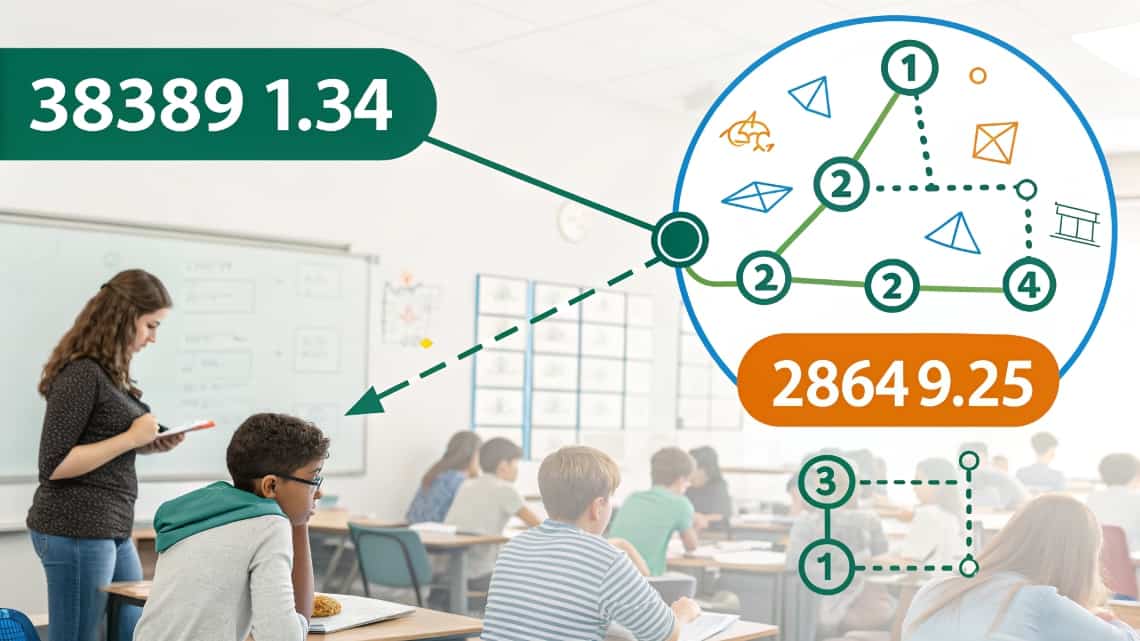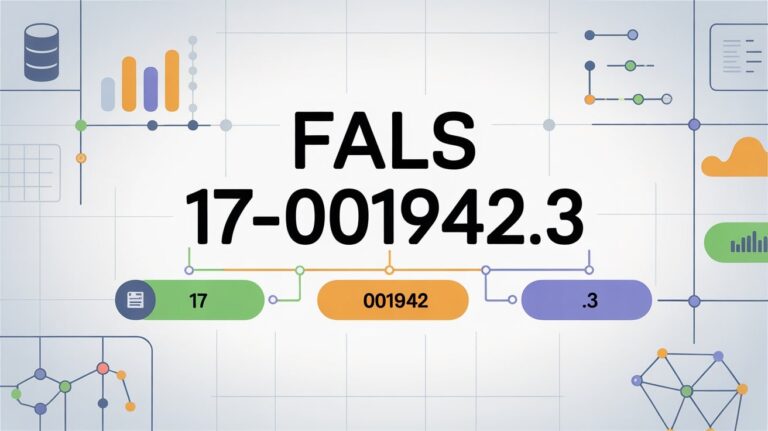38389/1.34 – The Deeper Meaning Behind A Simple Division!
At first glance, 38389/1.34 looks like a standard division problem — something you’d encounter in middle-school math. But beneath the surface, this calculation opens a pathway to broader conversations in mathematics, technology, engineering, cryptography, and education. While it may appear as a straightforward arithmetic task, it touches areas as diverse as numerical scaling, unit conversion, precision measurement, and digital security.
In this article, we will not only break down the math behind 38389 ÷ 1.34 but also explore why this specific division is important, where it can be used, and what deeper insights it can reveal in multiple real-world contexts.
What Is 38389/1.34 and Why Should You Care?
Mathematically, this is a division expression that resolves to:

38389 ÷ 1.34 ≈ 28649.25
But in terms of educational and practical significance, it teaches us about:
- Decimal operations
- Division accuracy
- Scaling in scientific and engineering models
- Cryptographic number behavior
- And even budget calculations in economics
So why does this matter? Because learning how to break down and apply a number like 38389/1.34 forms the foundation of critical thinking, analytical precision, and quantitative decision-making — skills that are indispensable in today’s data-driven world.
Understanding the Mathematical Breakdown of 38389/1.34
How Is 38389/1.34 Calculated?
Let’s understand the basic computation:
38389⁄1.34 = 28649.25
This is achieved using decimal division, where:
- 38389 is the dividend
- 1.34 is the divisor
- 28649.25 is the quotient
While calculators can give this in seconds, doing this manually:
- Reinforces understanding of decimal point placement
- Teaches you to align values during long division
- Hones your skills in real-life problem solving
Long Division Perspective: A Lost Art Worth Revisiting
Long division is often overlooked in the age of calculators. However, performing this division by hand helps you:
- Master decimal shifting
- Improve numerical intuition
- Learn patience in problem-solving
For example, to divide by a decimal like 1.34, you multiply both numbers by 100 (to make the divisor a whole number). So:
38389⁄1.34 = 3838900⁄134
Then perform the long division of 3838900 by 134, which gives ≈ 28649.25.
The Significance of 38389 and 1.34 as Numbers:
Is 38389 a Prime Number? Yes, 38389 is a prime number. This makes it a subject of interest in:
- Number theory
- Cryptography
- Randomized algorithms
Prime numbers are indivisible by any number except 1 and themselves, and that makes them vital to encryption models, especially in RSA algorithms where large prime numbers create unbreakable codes.
What About 1.34? The number 1.34 is a non-repeating decimal and can be written as the fraction:
1.34 = 134⁄100 = 67⁄50
Its application is vast in scientific calibration, financial modeling, and conversion ratios — especially where precision is key.
Real-World Applications of 38389/1.34
In Scientific Research and Measurement Systems:
Scientific instruments often require decimal scaling and data normalization. Let’s say a sensor reads 38389 units but your system uses a calibration factor of 1.34. Applying 38389 ÷ 1.34 normalizes the data to 28649.25, providing meaningful and comparable results.
Common uses:
- Spectroscopy adjustments
- Sensor calibrations
- Chemical concentration calculations
In Engineering and Construction
Engineers frequently scale values based on safety coefficients, unit conversions, or structural tolerances.
Example: If a beam’s stress tolerance is 38389 N, and material stress must be divided by a safety margin of 1.34, then:
Effective stress limit = 38389⁄1.34 = 28649.25 N
Thus, 28649.25 N becomes the working limit.
In Cryptography And Digital Security:
Prime numbers like 38389 are used in public-key encryption. A cryptographic algorithm may pair a prime like 38389 with another to generate keys. The inclusion of decimal operations (such as division by 1.34) may be used to:
- Obfuscate numeric patterns
- Create hybrid cryptographic protocols
- Introduce variability in pseudo-random number generators (PRNGs)
In Financial Modeling and Economic Forecasts:
Economists and analysts often apply conversion factors or indexes to adjust historical or projected data.
Example: If a dataset shows sales worth 38389 units in pre-inflation currency, adjusting for a growth factor of 1.34:
Adjusted sales = 38389⁄1.34 = 28649.25
This helps in real-time trend analysis, budgeting, and forecasting.
In Educational Curriculum and Skill Building:
Teachers use such problems to:
- Explain numeracy with context
- Build familiarity with non-integer division
- Encourage mental estimation and number sense
Exercises using 38389/1.34 demonstrate:
- Decimal operations
- Prime factorization
- Analytical thinking across disciplines
Why Does This Division Stand Out?
The division 38389/1.34 stands out because it represents how we simplify and scale complex numbers in practical situations. In science, it helps apply correction factors or convert measurements like Celsius to Kelvin with accuracy.
In computer science and AI, this kind of division is used to normalize data, ensuring that values stay within a usable range and don’t confuse algorithms. For example, scaling 38389 by 1.34 gives a normalized value of 28649.25, which prevents bias in machine learning models.
Even in business, using division like this makes large numbers easier to understand and apply, turning raw data into useful insights.
Numerical Aesthetics – The Beauty of 38389/1.34!
Let’s look at some hidden beauty of this number combination:
- Symmetry: Both numbers are evenly spaced decimals and whole numbers.
- Prime Identity: 38389 is a rare five-digit prime, making it mathematically elegant.
- Decimal Simplicity: 1.34 is not a complex irrational number; it can be converted to a neat fraction.
These small insights create opportunities for educators to:
- Teach number appreciation
- Stimulate math-based creativity
- Introduce abstract concepts in a relatable way
How To Teach 38389/1.34 in Classrooms?

Teaching Goals:
- Strengthen long division skills
- Build understanding of decimals and fractions
- Apply math in real-world examples
Classroom Ideas:
- Use real-world examples like money conversion
- Introduce prime number theory
- Run a mock “engineering project” where students must scale a stress factor using 1.34
Comparing with Similar Calculations
Let’s compare with some similar expressions:
| Division Expression | Result | Relevance Example |
|---|---|---|
| 50000 ÷ 1.25 | 40000 | Budget adjustments |
| 38389 ÷ 1.34 | 28649.25 | Sensor calibration, cryptographic analysis |
| 100000 ÷ 2.5 | 40000 | Unit pricing or performance scaling |
As shown, 38389/1.34 uniquely combines large prime arithmetic with decimal handling, making it both educational and practically powerful.
FAQs:
Why is 38389/1.34 more than just a math problem?
While it may seem like basic arithmetic, this division reflects real-world problem-solving. It shows how we handle decimals, convert units, or scale data in a meaningful way. The operation teaches mathematical thinking and practical application together.
Can 38389/1.34 be useful in computer science?
Yes, especially in machine learning and data science. Data points like 38389 are often scaled using a normalization factor such as 1.34. The result, 28649.25, keeps values within a usable range to help algorithms function properly.
Is 38389/1.34 used in financial calculations?
Yes, financial analysts often apply such division to adjust for inflation, currency rates, or investment growth factors. Dividing a financial total of 38389 by 1.34 might reflect inflation adjustment, yielding 28649.25 in today’s value.
Can this equation appear in physics or chemistry?
Yes, especially when calculating rates or adjusting experimental results. A measurement of 38389 might need to be corrected using a standard factor of 1.34. Dividing gives 28649.25, which could represent velocity, pressure, or molarity.
Conclusion:
The division 38389/1.34 may look simple, but it plays a big role in many fields like science, engineering, and data analysis. It helps us convert, scale, and make sense of large numbers with precision.
From classrooms to laboratories, this calculation teaches both accuracy and real-world logic. Understanding it builds confidence in using math every day. It’s a small formula with big meaning behind it.
Also Read:






